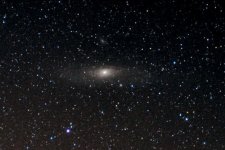The Canon 60Da has had some success in the astrophotography community, so I suspect that Nikon is trying to one-up the game with a full-frame version.
There are two (main) issues with using a DSLR for astrophotography
1. Red sensitivity in the ~650nm wavelength range (needed for many emission nebulas)
2. Thermal noise
Both Canon and Nikon have addressed #1, but neither take care of #2. Especially in warmer climates, thermal noise from the sensor on long exposures can overwhelm the gains achieved by the increased red sensitivity.
I've seen some great images from the Canon, so I will be interested to see what people can do with this Nikon.
For the money, I chose to invest in a thermoelectrically (TEC) cooled CCD designed with wide spectrum and specific for astrophotography. The downside, is that camera can't be used for anything else.




